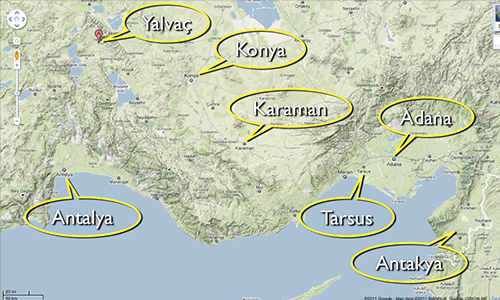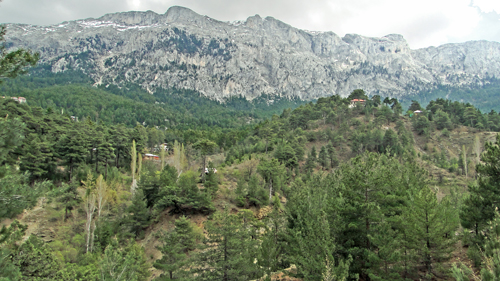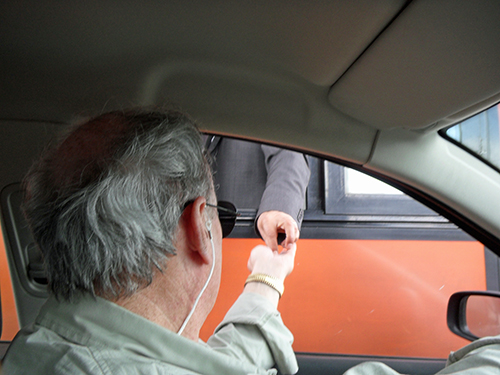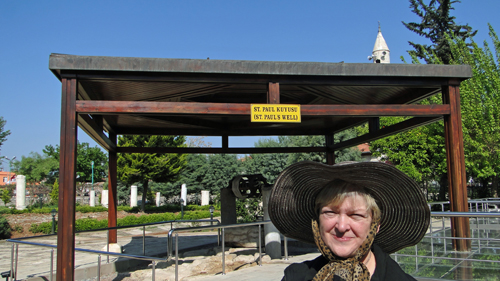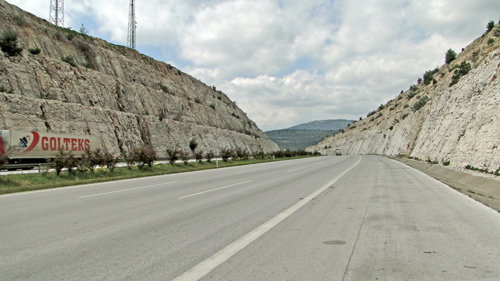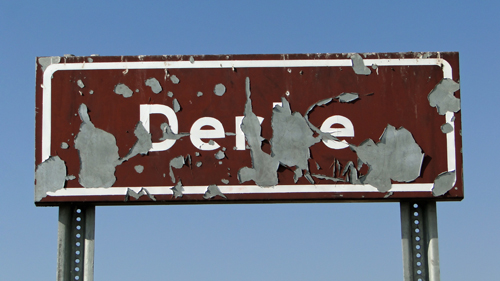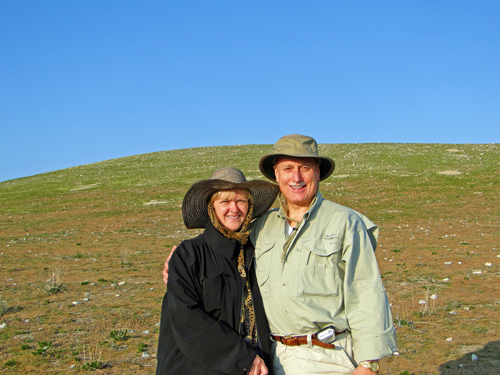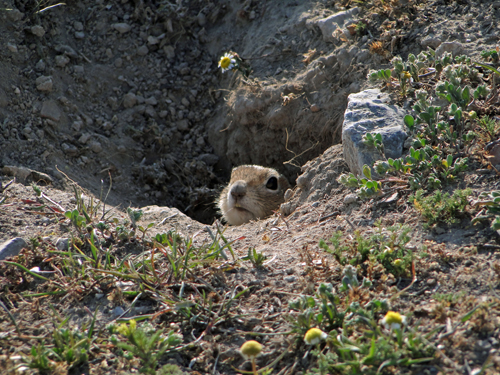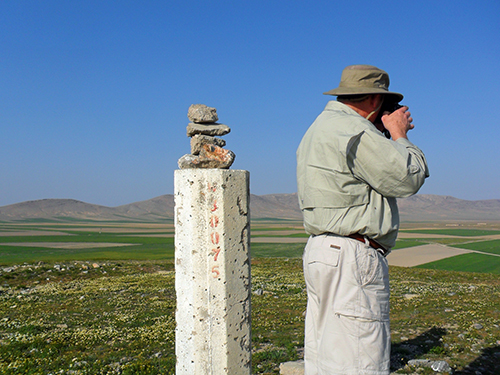April 10, 2010 (Saturday)
Adana. Up early and get packed. We go to business center to print maps to Derbe and Lystra. Google map won’t print satellite view so Jerry gets his camera and takes pictures of the computer screen. Hopefully, we’ll be able to find the sites if we are on visual reconnaissance only. Hit the petro station by the Hilton. Wow! 90 Turkish lira for our diesel fill up, and we only needed ½ a tank.
Tarsus. We left the gas station by the Hilton at 8:20 am. We stopped briefly for me to buy some snacks in the market for breakfast: cookies, orange juice, etc. The view of the Taurus Mountains from the highway is very pretty, so we stop by the side of the road and take some pics and a movie of the mountains. This is the route that Barnabas traveled to retrieve Paul from Tarsus to go back to Antioch to help with the Gentile work there. Back in the car and on to Tarsus.
St. Paul’s Well. The Garmin works, and we find St. Paul’s well by using the “point of interest” feature on the Garmin. It leads us to the place, but some roads are blocked for some official event. Turkish military are in dress clothes and lots of dignitaries lined up. So, we go around a couple of times and find our way to the other side of the event. We park on the street and walk through the grounds of a mosque to get to “St. Paul’s well.” The fee is 3 Turkish lira. The well itself is not of particular interest, with the association with Paul only tradition, but the excavations around the well revealed Roman paving stones believed to date somewhere in the first three centuries A.D., so that is interesting.
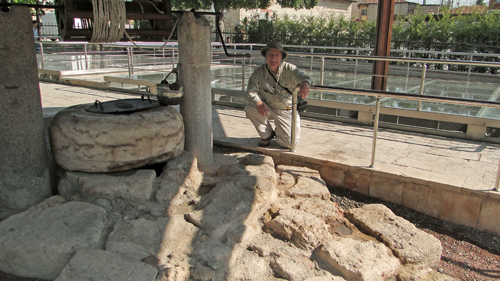
The site is nicely kept and manicured, with pretty gardens and roses just budding out. The roses will be very beautiful in a few weeks. Jean enjoys a stroll through the tidy landscaping.
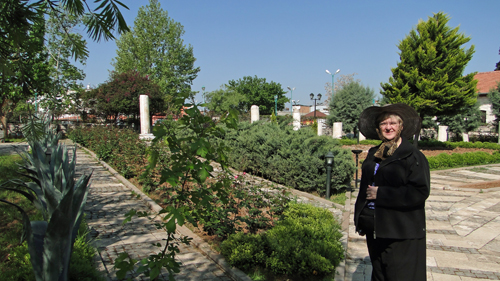
Tarsus Roman Road. From there we go back to the car to review Mitchell Reddish’s description in his sites of Greece and Turkey book of how to get to the Roman road excavation in Tarsus, which is located about 500 feet southwest of St. Paul’s well. Jerry measures out some steps to get distance and visual bearings on the points of the compass, and we start out. We walk around the traffic round-about to get around the official ceremony and presentations that are going on in the main market square, and decide to ask one of the officials standing nearby for directions. We get enough information to go in the right direction and find the Roman road! Yeah!! Jerry is very excited! We look through the fence and then walk around the area to find the ticket window, but the site is closed today! Ah! Turkey—one just never knows for sure what is or is not open at any time. So, we can’t get in to visit the actual site close up, but we have a good view from the side, and Jerry gets good pictures anyway; he just didn’t get to walk on the road, which my scholar so wanted to do.
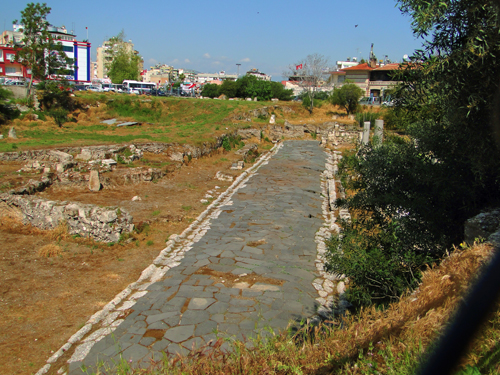
We started to head back to the car but decided to take some pictures so we can give visual “location” information to others who may need to know who are trying to find the Roman road. By now, the presentation has broken up, and the dignitaries are leaving, all having red roses in their hands. One of them handed me his red rose as a gift. So nice. We get back to our car and drive a few blocks to a fruit stand. I buy us 2 bananas, 2 apples and 2 oranges.
Roman Yolu. Now we’re off to find another Roman Yolu (road) 10 miles north of Tarsus. Jerry still wants to walk an ancient Roman road, just one of his personal goals for the trip. This site was mentioned by Reddish in his book. We had to go way around to get to the correct road, because E90 has no egress. We finally get to D750 North and head out. Sure enough, we find the “Roman Yolu” sign on the side of the road pointing left up a narrow winding road up the mountainside to Saliliki village. Our quest is looking promising. We ascend this winding road up the mountainside that continues to narrow to almost one lane and through Saliliki village with children in the street, cows being herded, etc. We got lots of attention, because I imagine they don’t see many cars or Americans in these parts. We drive, drive, drive, all the while looking all around to see if we can find another “Roman Yolu” sign directing us to the site or the Roman road itself.
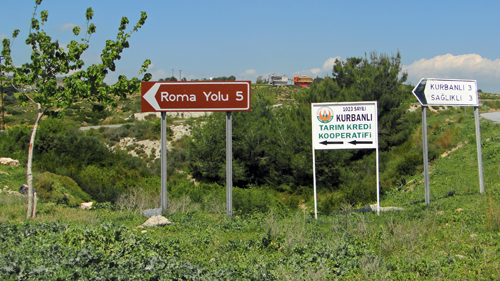
Our forward progress comes to a dead stop in a dirt driveway at someone’s house. The road just completely dead-ends in a driveway! We start to turn around. A young man comes out to the car, and we try to ask if he knows where the “Roman Yolu” is. He speaks no English whatsoever, but he tries to help. He gets in the back seat to “show us the way” (hand motion communications). He’s very nice. He gives his name, Mehmet. When we get to the fork in the road, he motions for us to stop, and he points to the left fork, which is back the way we came, and gets out of the car. We offer to pay him, but he won’t take anything. The Turkish really are so nice. We determine that all he understood from what we were trying to ask is the “yolu” part, which means “road,” and didn’t recognize the word “Roman.” He thought we were asking how to get back down the mountainside to the paved road from which we had turned. So, we end up back at the Roman Yolu sign by the highway where we had started. Talk about a Bill Murray, “Groundhog Day” experience!
We decided to take one more stab at finding the road up the mountainside, figuring we just had missed another sign or something, and start back. We mark the mileage so we’ll know exactly when we get to the 5 km distance that the “Roman Yolu” sign on the main road indicated. We get to the 5 km mark and stop. Nothing. No signs. No ancient Roman road, Jerry is exasperated to be “so close, yet so far.” He even gets out and hikes a long way both right and left of the road, figuring overgrowth or a rise in the ground hides the road, but still finds nothing. He sees beautiful scenery, but no road. We have another Colossae experience on our hands here. [We searched literally for hours outside of the town of Denizli on the sabbatical of 2001–2002 trying to find the tel of Colossae, but never did find the tel.—Jerry] Jerry is real disappointed. Once again on this trip, he misses out on walking down a Roman road Paul may have walked.
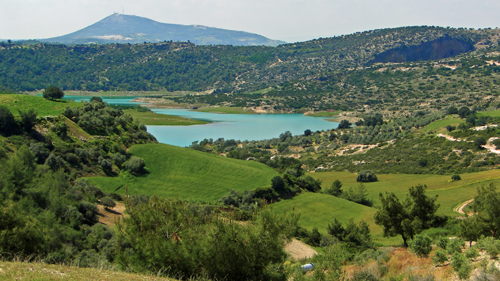
Cilician Gates. We go down one more road and decide we must give up, so we go back to the highway, set the Garmin for our final destination of Karaman, and off we go to find the Cilician Gates on our way. We do find the big pass (not really a gate, just a pass through the Taurus Mountains) and take some pictures. Paul would travel through this mountain pass on his second and third missionary journeys. Jerry, of course, is delighted to get a movie of our car going through the pass. Then on we go, pushing to find the unexcavated tel of Derbe.
Derbe. Our nice, fast four-lane Highway E90 plays out, and we are back to D750, which soon becomes a two lane and is very tough driving. I have never seen so many trucks of all kinds. The Garmin leads us towards Karaman, and when we get about 20 miles away, we start looking for the road to Derbe by way of Sudugari village. What do you now, but suddenly to our wondering eyes did appear a sign pointing the way to Sudugari, so we turn and go through Sudugari to Ekinozu and on through that little village. Even in such a little village, we feel quite fortunate to find yet another sign to Derbe, so we turn and follow our noses, and voila! There it is—a large oval shaped tel with a rather beaten up sign that appears marking the site as Derbe.
Jerry is ecstatic to find the last stop on Paul’s first missionary journey before they turn around to retrace their way back thorough areas they had preached in South Galatia. Traveling these distances (in a car) gives a new realization of how determined and dedicated Paul was to spreading the Good News! We stay at Derbe 1 ½ hours and walk all around the top, etc. making movies and pictures. Little gophers are everywhere popping up out of their holes and running around. We try to get some pictures of them, but they are fast little critters. As we are going back to the car, Jerry noticed broken pottery pieces that are ancient by their markings, he thinks Chalcolithic. We assume erosion and rain wash has unearthed them. Oh, what treasures there must be under all this dirt!
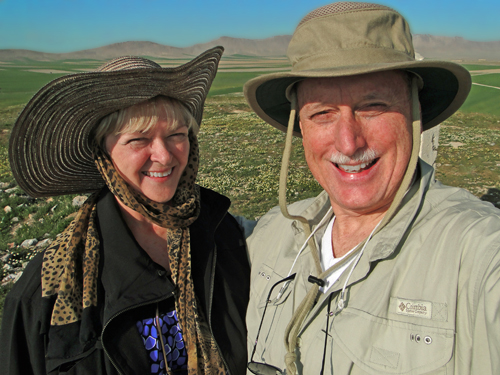
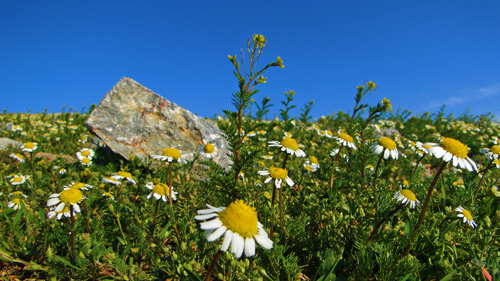
Karaman. We drive the short distance on into the modern city of Karaman near the tel of Derbe. After traveling these dusty, dirty roads, the car is filthy. We stopped at a Shell station for fuel, and it’s 95 Turkish lira. No wonder everyone walks everywhere over here. The attendant speaks some English, so we ask directions to our hotel, and he gives directions that square up with what the Garmin is telling us. We also asked about a car wash, and what do you know—they have one, and it’s free with a fill up, so we get the car cleaned up. Only one wrong turn on the way to the hotel, and we find it. We check in and are served hot tea while we wait. They want to keep our passports, but we talk them into copying them and giving the passports back to us. Up to our room, which is large, with a nice sitting room (thank you, Levent). The restaurant is on the sixth floor, so we go up and have dinner. Dinner is decent Turkish fare. I think we’ll rest tonight. Our itinerary tomorrow is catching two museums and some short driving. Shouldn’t be a hard day. We’ll head to Karaman Museum tomorrow morning after breakfast.
For a video of the Tarsus and Derbe action today:
